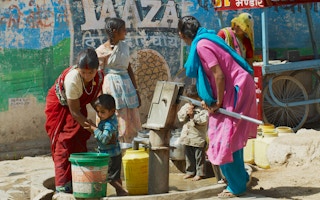Researchers have been busy trying to find out more about why many parts of the world are experiencing worse and longer droughts. Californian scientists had cleared up any confusion about Californian droughts. And about droughts in the rest of the Americas, the Mediterranean, western and southern Africa and east Asia.
Greenhouse gas emissions and other atmospheric pollution from human causes tend to increase the frequency of drought, the intensity of drought and the maximum duration of drought worldwide.
“There has always been natural variability in drought events around the world, but our research shows the clear human influence on drying, specifically from anthropogenic aerosols, carbon dioxide and other greenhouse gases,” said Felicia Chiang, of the University of California Irvine, and now at Nasa’s Goddard Institute for Space Studies in New York.
She and colleagues write in the journal Nature Communications that they used a computer simulation to explore drought characteristics, first with “natural” conditions, and then with extra help from atmospheric greenhouse gases from fossil fuel combustion, along with tiny atmospheric particles from power plants, car exhausts and fire to clear land and burn waste.
The “natural-only” simulations showed no regional changes from the late 19th to the late 20th centuries. But once the researchers tested their simulation with more atmospheric carbon dioxide, sulphur particles and soot, they could see statistically significant increases in drought hotpots in southern Europe, Central and South America and other regions.
Researchers have been warning for years of the danger of increasing drought with ever-higher global average temperatures. The eastern Mediterranean recently went through its worst drought in 900 years, while California has been afflicted by devastating heat, prolonged dry spells and dreadful forest fires.
Drought has been so frequent in the Amazon that one scientist has warned that the entire rainforest ecosystem might collapse. So the latest study is just another confirmation of a familiar story.
“Knowing where, how and why droughts have been worsening around the world is important, because these events directly and indirectly impact everything from wildlife habitats to agricultural production to our economy,” said Amir AghaKouchak, a co-author at UC Irvine.
And a third contributor, his colleague Omid Mazdiyasni, now with the Los Angeles county department of public works, added: “If droughts over the past century have been worsened by human-sourced pollution, then there is a strong possibility that the problem can be mitigated by limiting these emissions.”
This story was published with permission from Climate News Network.










